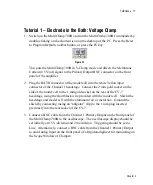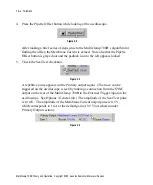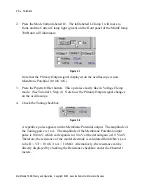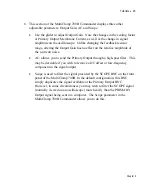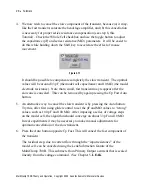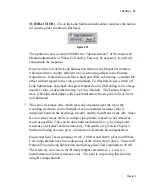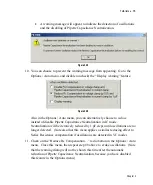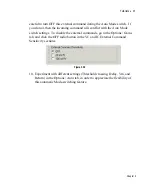
28
•
Tutorials
4. We now wish to cancel the slow component of the transient, because (a) it may,
like the fast transient, saturate the headstage amplifier, and (b) this cancellation
is necessary for proper series resistance compensation (see step 8, this
Tutorial). Check the Whole Cell checkbox and use the toggle button to adjust
the capacitance (pF) and series resistance (M
Ω
) parameters. It will be easier to
do this while holding down the Shift key to accelerate the effect of mouse
movement.
Figure 3.17
It should be possible to compensate completely the slow transient. The optimal
values will be around 33 pF (the model cell capacitance) and 10 M
Ω
(the model
electrode resistance). Note that a small, fast transient may reappear after the
slow one is canceled. This can be removed by again pressing the Cp Fast Auto
button.
5. An alternative way to cancel the slow transient is by pressing the Auto button.
Try this, after first using glider control to set the pF and M
Ω
values to “wrong”
values, such as 100 pF and 100 M
Ω
. After imposing a series of voltage steps
on the model cell, the algorithm should converge on about 33 pF and 10 M
Ω
.
In real experiments it may be necessary to make manual adjustments for
optimum cancellation of the slow transient.
6. Press the Auto button opposite Cp Fast. This will cancel the fast component of
the transient.
The residual step, due to current flow through the “input resistance” of the
model cell, can be canceled using the Leak Subtraction feature of the
MultiClamp 700B. This subtracts from Primary Output a current that is scaled
linearly from the voltage command. (See Chapter 5,
LEAK
MultiClamp 700B Theory and Operation, Copyright 2005 Axon Instruments / Molecular Devices




